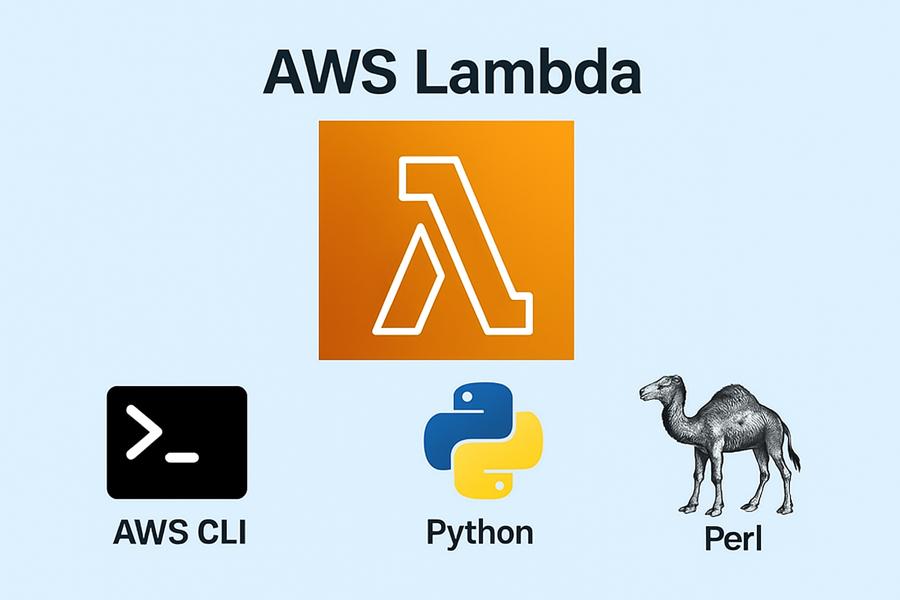Serialisation in Perl

Comparative analysis of Storable and Sereal using Perl.
Please check out the link for more information:
https://theweeklychallenge.org/blog/serialisation-in-perl

Comparative analysis of Storable and Sereal using Perl.
Please check out the link for more information:
https://theweeklychallenge.org/blog/serialisation-in-perl
All three of us attended.
I had the pleasure of attending The Perl & Raku Conference (TPRC) 2025 in Greenville, SC as a volunteer. As always, opinions are my own.
The Conference
The conference went quite well. Unfortunately, a major weather event disrupted flights across the US, particularly around Atlanta, causing travel issues for some attendees and speakers. This led to a few talk cancellations.
We adopted it by consolidating the two talk tracks into one. There was still a diverse range of topics, and judging by the audience reactions, some of the talks were very well received.
The conference was attended by 40-50 people.
The Venue
The event was hosted at a Holiday Inn Express in Greenville, which turned out to be an excellent choice. The hotel was clean, recently renovated (following flood repairs last year), and very reasonably priced: $139 + tax per night for a suite. The staff were quite friendly and accommodating. It also proved to be a great low-cost venue for hosting a conference - more on that below.
I had created the library in C as part of a bigger project to create a multithreaded and hardware (GPU, and soon TPU) accelerated library to manipulate fingerprints for text. At some point, I figured one can have fun vibe coding the interface to Perl. The first post in the series just dropped ; it provides the background, rationale, the prompt and the first output by Claude 3.7. Subsequent posts will critique the solution and document subsequent interactions with the chatbot.
Part 2 will be about the alienfile (a task that botched by the LLM). Suggestions for subsequent prompts welcome ; as I said this is a project whose C backend (except the TPU part) is nearly complete, so I am just having fun with the Perl part.

Quick introduction to AWS Lambda using CLI, Python and Perl.
Please check out the link for more information:
https://theweeklychallenge.org/blog/aws-lambda
Paper and talk submissions will be accepted until July 01, 2025 18:59 CDT
In particular I'd like to invite anyone who regrets not submitting a talk to the TPRC or who has gotten bit by the speaking bug. You are welcome to give your talk remotely.
Graham couldn’t make it, so only Aristotle and Philippe this week.
Remember! Click Continue Reading to see all the text.
I am selling my villa unit and downsizing, probably in a month or so.
There may be a period when I am off-line.
In Australia villa unit means (usually) a stand-alone building in a small block of units.
I have 2-bedroom unit and am moving into a retirement (Yikes!) village to a 1-bedroom unit.
The are various reasons but one is this month I turned 75, much to my amazement and horror.
I still live independently, drive, have 2 miniature dogs, manage my own medicine, etc. So - all good ATM.
And yes, I am still programming. I more-or-less monthly release https://savage.net.au/misc/Perl.Wiki.html,
my curated compendium of Perl module, and I am slowly automating the creation of this wiki.
The next step will be to output the wiki as a jsTree (https://www.jstree.com/),
but moving - as you might know - consumes a lot of time.....

Lexical Method in the latest release Perl v5.42 RC1. For more details, follow the link: https://theweeklychallenge.org/blog/lexical-method-v542
The Dancer Core Team is excitedly preparing a major release of Dancer2, 2.0.0. In advance of this, I'd like to give you all a preview of what to expect:
A handful of bug fixes
Customizable scrubber/censor engine (when dumping errors, etc. - a long requested feature)
Remove Template::Tiny fork from core (Template::Tiny support remains, but ether graciously merged our customizations into Template::Tiny)
Remove Dancer2::Template::Simple from the core of Dancer2
New documentation, courtesy of a TPRF grant
Removal of deprecated code (according to our deprecation policy)
Official support for Perl 5.22 and newer
The following features are possible, but not likely for 2.0.0 (but maybe soon thereafter):
Bring your own config engine (TOML, JSON, etc.)
Using Throwable to produce errors
I'm estimating a release in the next 2-4 weeks. There are still a few bikesheds to paint, cats to herd, and yaks to shave.
If you have questions or feedback, we'd love to hear from you! Until then, keep Dancing, then Dance a little happier! :)
Jason/CromeDome
In the past, it took two years to merge my first PAUSE on Plack branch into the master and three years to merge the next PAUSE on Mojolicious (actually, two years to deploy and another year to merge). Now the question was: how long would it take to merge the next big thing, multifactor authentication for PAUSE? Two years, three years, or maybe four years this time? I already had a two-year-old draft branch and initially wished to merge it this year. However, things went differently.
All three of us attended.

Quick introduction to AWS DynamoDB using CLI, Python and Perl.
Please check out the link for more information:
https://theweeklychallenge.org/blog/aws-dynamodb
With help from the community a development release of DBD::Oracle has been released to the CPAN.
This release includes a number of important changes that we hope will improve stability with threaded Perl.
If you are using DBD::Oracle I would ask that you try it out in your non-production environments initially and perhaps if you are confident there after, in your production environments.
The branch for it is here on github. I am personally grateful for people spending time and sending in pull requests , there is no monetary support for this driver although Oracle's open source community manager is actively engaged in discussions on issues and pull requests.
Github actions are configured on the repo and the quite thorough library of unit tests are run against Oracle XE on Ubuntu. This provides good signal but with extremely limited coverage of operating systems and database versions.
Due to the lack of variety in automated testing on Github - and the business critical nature of most Oracle databases - my recommendation is to mirror the Github repo in to your organization's repos and configure CI testing against your specific combination of Oracle versions, operating systems, and settings. The Github actions can be adapted to Gitlab reasonably quickly and give you a very high level of confidence before trialing new versions in production.
Over the past year, I’ve been self-studying XS and have now decided to share my learning journey through a series of blog posts. This tenth post introduces you to what I call closures in XS.
Datastar is a new-ish entry in the world of hypermedia-oriented ,htmx alternatives, with a distinct focus on Server-Sent Events. It describes itself thus:
Datastar brings the functionality provided by libraries like Alpine.js (frontend reactivity) and htmx (backend reactivity) together, into one cohesive solution. It's a lightweight, extensible framework that allows you to:
- Manage state and build reactivity into your frontend using HTML attributes.
- Modify the DOM and state by sending events from your backend.
I added Perl for Datastar with Datastar::SSE, for the backend reactivity bits.

Quick refresher about Array and List in Perl.Please check out the link for more information: https://theweeklychallenge.org/blog/array-vs-list
All three of us attended.
open done by readline. We will outline our thoughts on the thread.Hi, you my have noticed our "ad" showing up on on metacpan.org - many thanks to David Cross for helping us out there! You may have to hit "refresh" a few times to see it (but not too many, please! xD)
Now, as much as we'd love to see everyone in Austin, TX on July 3-4, and it's sure to be a lot of fun, the PCC is a hybrid event, meaning we do permit remote attendees and worthy talks.
We already have many exciting and highly technical Perl talks. But we are selfish and we want more. It is okay if you even repeat a talk you've given elsewhere. We offer several levels of talks, including lightning talks, which we all know is how most of us got started. Do not be afraid! :-)
blogs.perl.org is a common blogging platform for the Perl community. Written in Perl with a graphic design donated by Six Apart, Ltd.